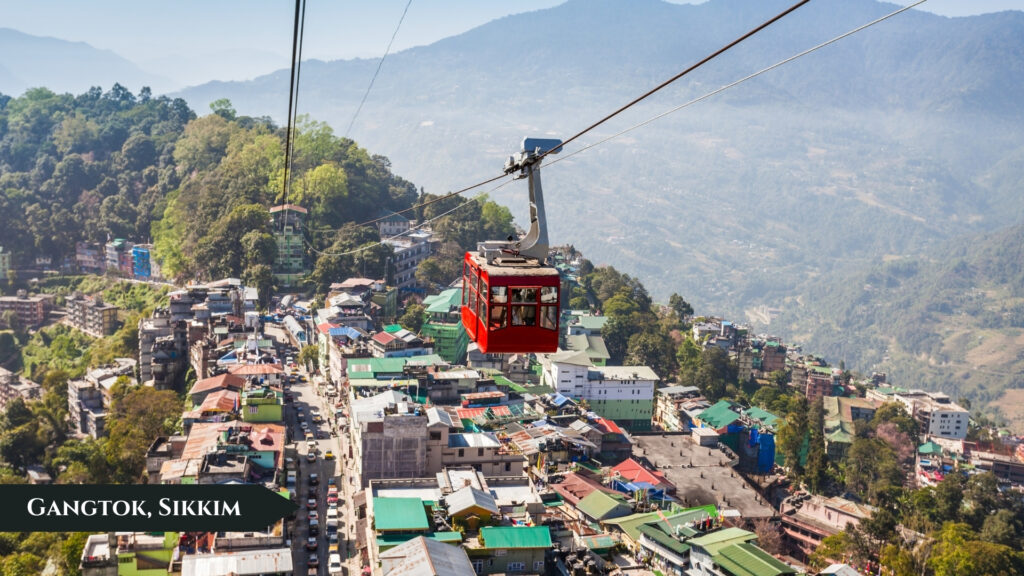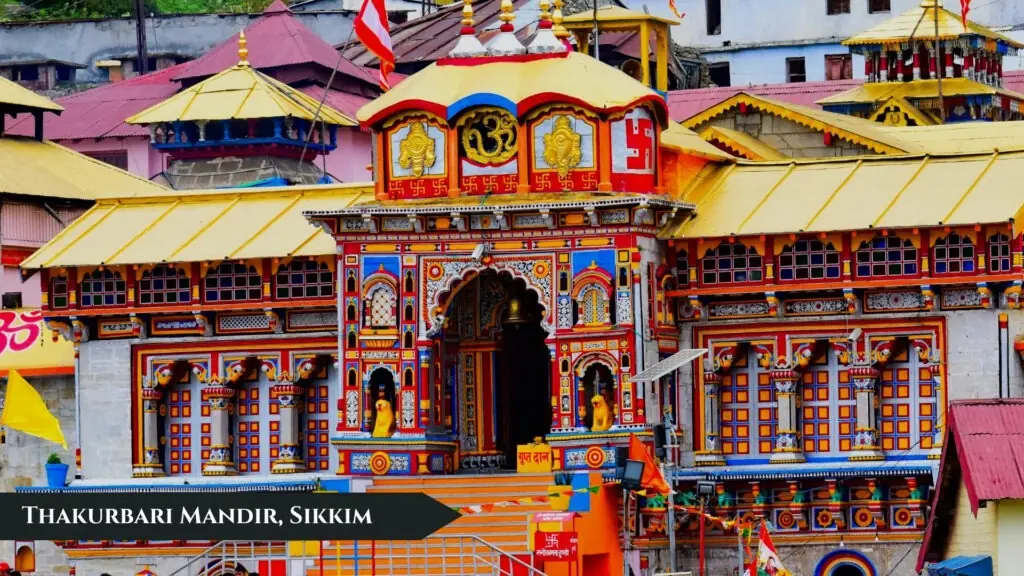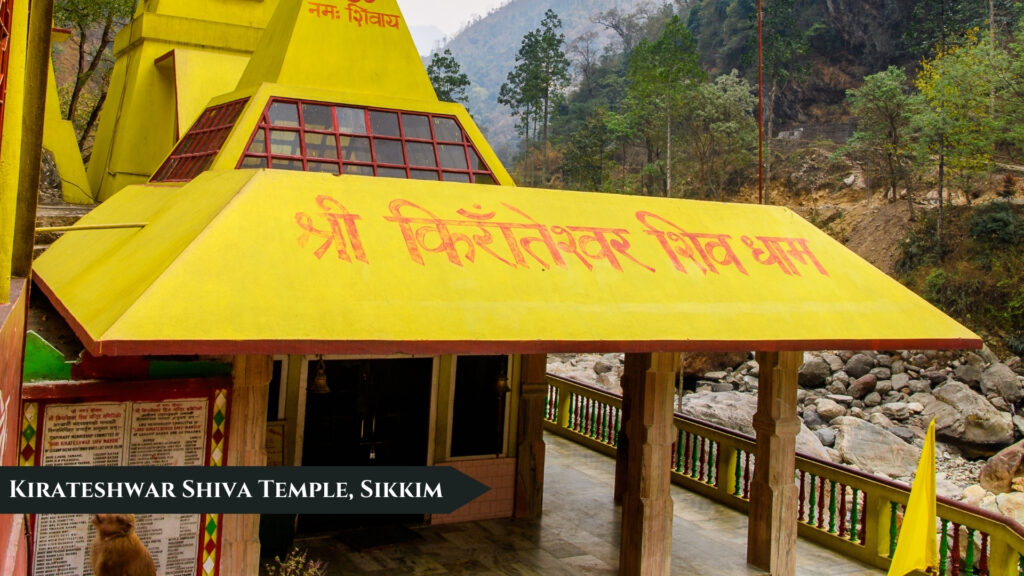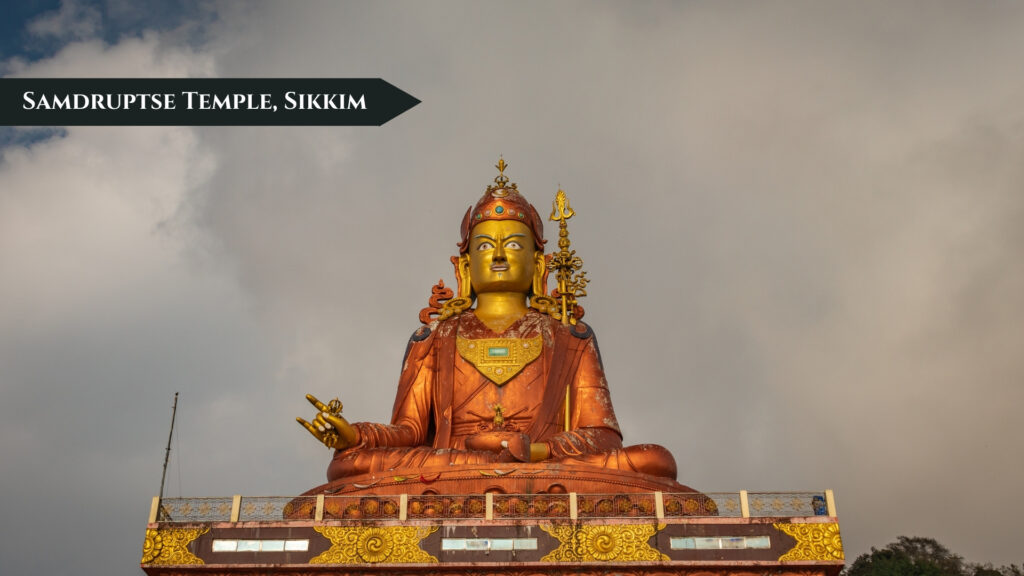Hanuman Tok in Sikkim is one of the many hidden gems the state has. This serene temple dedicated to Lord Hanuman offers a peaceful retreat with stunning views of the surrounding landscapes. On my previous visit to Gangtok, I had to visit this tranquil spot that the locals of Sikkim had told me about.
In this blog, I share my experience of the time I visited Hanuman Temple in Sikkim and all the stories that I have heard about the place.
Location Of Hanuman Tok
Hanuman Tok is located about 11 kilometers from Gangtok, the capital city of Sikkim. The temple is situated at an altitude of 7,200 feet, providing breathtaking views of the Kanchenjunga range and the surrounding valleys. This temple is a must-visit for anyone seeking spiritual solace and natural beauty in Sikkim.
How To Reach Hanuman Tok

If you are planning on going to Hanuman Tok, you have to reach Gangtok first. Gangtok is well-connected by road and can be reached from various parts of Sikkim and West Bengal. The nearest airport is Bagdogra, and from there, you can take a taxi or a shared cab to Gangtok. Once in Gangtok, you can hire a private taxi or take a shared one to reach Hanuman Temple, which is just a short drive away.
What Is The Main Attraction Of Hanuman Tok
The main attraction of Hanuman Tok is the peaceful temple dedicated to Lord Hanuman. The temple is maintained by the Indian Army, adding a sense of discipline and cleanliness to the area. From the temple, you get an unobstructed view of the majestic Kanchenjunga range. The serene environment and the panoramic views make the Hanuman Temple a favorite spot for both locals and tourists.
Hanuman Tok Architecture
Here’s an overview of the architecture and features of Hanuman Tok:
Architectural Style
- Himalayan Influence: The architecture of the temple showcases a blend of traditional Himalayan styles, reflecting the local culture and religious practices.
- Simple Yet Elegant: The temple’s design is simple yet elegant, focusing on providing a serene environment for prayer and meditation.
Structural Elements
- Main Shrine: The main sanctum houses the idol of Lord Hanuman. The sanctum is simple, focusing on the divine presence of Hanuman rather than elaborate decoration.
- Prayer Hall: The temple has a spacious prayer hall where devotees gather for rituals and ceremonies. This area is typically open and airy, facilitating the flow of air and light.
- Entrance and Courtyard: The temple features a welcoming entrance leading into a well-maintained courtyard. The courtyard is often used for community gatherings and religious events.

Decorative Elements
- Intricate Carvings: The temple walls and pillars are adorned with intricate carvings and motifs depicting various aspects of Hindu mythology, particularly scenes related to Lord Hanuman.
- Sculptures: Statues and sculptures of different deities, mythological figures, and animals are placed around the temple premises, adding to its spiritual ambiance.
- Prayer Flags: Reflecting the syncretism of Hindu and Buddhist practices in the region, the temple surroundings often feature colorful prayer flags that are commonly seen in Himalayan religious sites.
Hanuman Tok Information
Hanuman Tok holds significant spiritual value for the locals and is a popular destination for tourists seeking peace and tranquility. The temple is not only a place of worship but also a spot to appreciate the natural beauty of Sikkim.
Best Time To Visit Hanuman Tok
The best time to visit Hanuman Tok is during the months of March to June and September to November. During these months, the weather is pleasant, and the skies are clear, providing the best views of the Kanchenjunga range. The months of December to February can be quite cold, and the area may experience snowfall, adding a different charm to the place. You can refer to my Instagram for more details on this place.
Hanuman Tok History and Local Beliefs
According to local beliefs, Hanuman Temple is a sacred spot where Lord Hanuman rested while carrying the Sanjeevani herb. The temple was established to honor this legend and has since become a significant place of worship.
The locals believe that offering prayers at Hanuman Temple helps in seeking blessings for good health, prosperity, and protection from evil.
The temple is maintained by the Indian Army, which ensures its cleanliness and serenity. The disciplined maintenance adds to the overall spiritual experience of visiting Hanuman Temple.
Other Temples In Sikkim
Here below, I have added some other famous temples in Sikkim that you can look forward to visiting. I have a blog dedicated to famous temples in Sikkim that covers almost all the temples of the state.
Ganesh Tok

Ganesh Tok is a small but significant temple dedicated to Lord Ganesh. Offering panoramic views of Gangtok and the surrounding mountains, this temple is a peaceful spot for devotees and tourists to seek blessings and enjoy the natural beauty of Sikkim.
Baba Harbhajan Mandir

Baba Harbhajan Mandir is a unique temple dedicated to an Indian army soldier, Baba Harbhajan Singh. Believed to protect and bless the soldiers guarding the Indo-China border, this temple attracts devotees who come to pay homage to the spirit of the reputed soldier and seek his blessings for protection and well-being. Baba Harbhajan Mandir is situated in the East Sikkim region of the state of Sikkim.
Thakurbari Temple

Thakurbari Temple is a prominent Hindu temple in Sikkim dedicated to Lord Krishna. Known for its beautiful architecture and peaceful surroundings, the temple is a place of worship and pilgrimage for devotees from across the state and beyond.
Kirateshwar Temple

Kirateshwar Temple is dedicated to Lord Shiva and is believed to be the spot where Arjuna, from the Mahabharata, received the divine weapon, Pashupatastra. Surrounded by rich greenery and overlooking the confluence of two rivers, this temple holds great religious significance and attracts devotees seeking blessings and solace.
Vishwa Vinayak Temple

Vishwa Vinayak Temple is a reputed shrine dedicated to Lord Ganesha, the remover of obstacles. Situated in peaceful surroundings, the temple provides devotees with a peaceful space for prayer and reflection, as well as stunning views of the surrounding mountains and valleys.
Samdruptse Temple

Samdruptse Temple is home to the high statue of Guru Padmasambhava, also known as Guru Rinpoche, who is reputed as the patron saint of Sikkim. Perched on top of a hill, the temple offers panoramic views of the Himalayas and serves as a spiritual beacon for devotees and visitors alike.
FAQs Related To Hanuman Tok
What is the significance of Hanuman Tok?
Hanuman Tok is a significant Hindu shrine dedicated to Lord Hanuman, believed to be where Hanuman rested while carrying the Sanjeevani herb.
Where is Hanuman Tok located?
The temple is located about 11 kilometers from Gangtok, Sikkim, at an altitude of 7,200 feet.
What is the best time to visit Hanuman Tok?
The best time to visit is during the months of March to June and September to November for clear skies and pleasant weather.
How can one reach Hanuman Tok?
The temple can be reached via road from Gangtok. The nearest airport is Bagdogra in West Bengal, from where you can take a taxi to Gangtok and then proceed to Hanuman Temple.
Is there an entry fee for Hanuman Tok?
No, there is no entry fee for visiting the temple.
What facilities are available for visitors at Hanuman Temple?
Basic facilities such as restrooms, drinking water, and a resting area are available. Additionally, nearby shops and eateries provide refreshments and religious offerings.
Are there any special rituals performed at Hanuman Temple?
Special pujas and aartis are conducted daily, with grand rituals during major Hindu festivals. Devotees also perform offerings and prayers to seek blessings from Lord Hanuman.
Is photography allowed inside Hanuman Tok?
Photography is generally allowed in the temple premises, but it’s advisable to check with the temple authorities regarding any specific restrictions.




